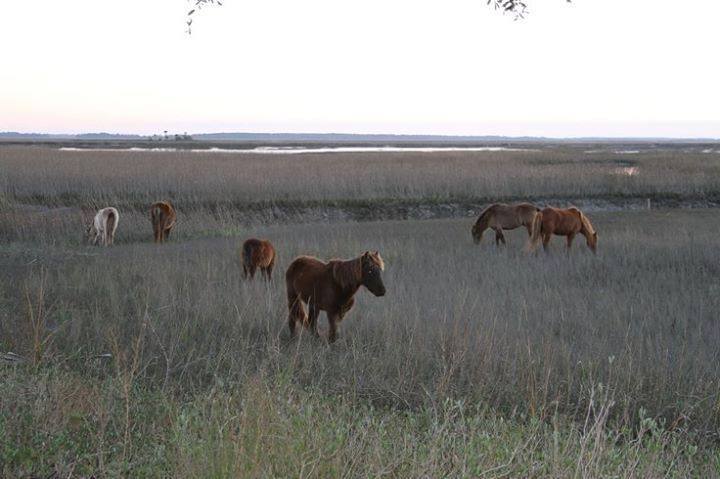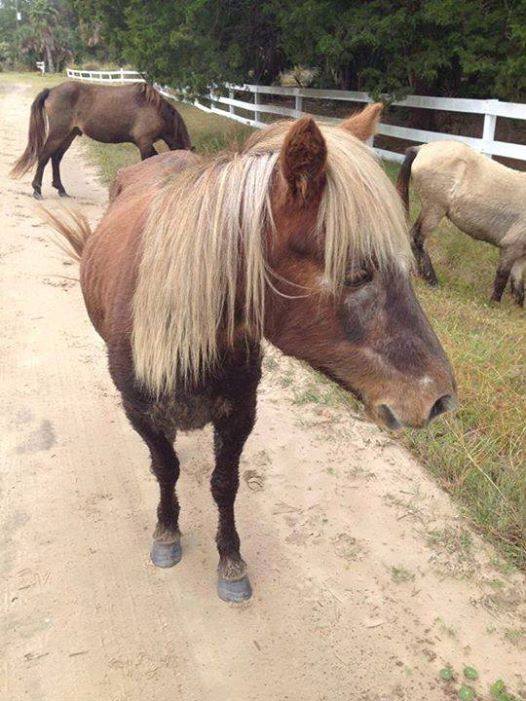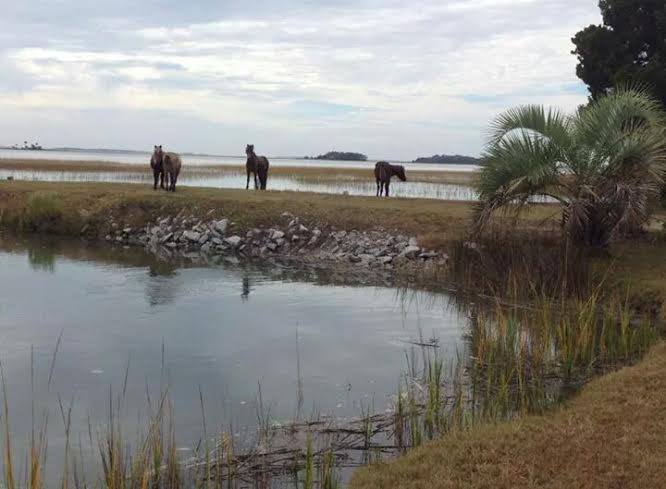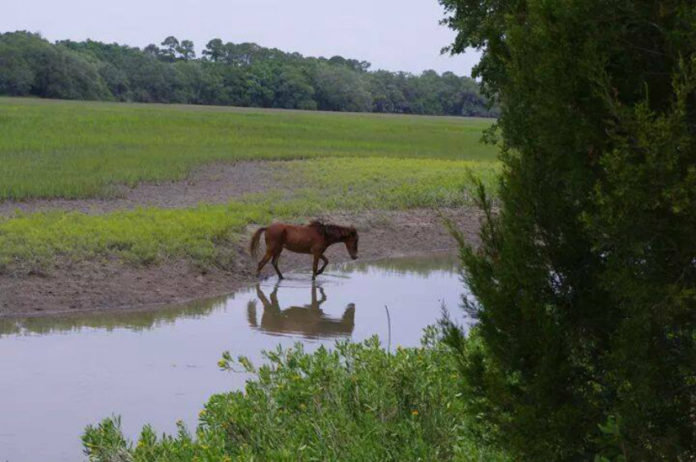You may have heard that the sea islands of Beaufort are home to wild horses. This is true. They’re not as popular and not the same as the Corolla Wild Horses that roam the beaches of the Outer Banks in North Carolina; nor are they the same as the horses that inhabit Cumberland Island in Georgia.
These rare horses on our Sea Islands are Shetland ponies bred with Marsh Tacky horses, the official state heritage horse of South Carolina.
Marsh Tackies developed on the Sea Islands over three centuries. They’re descended from Colonial Spanish horses brought to coast of South Carolina in the 16th century, when the Spanish attempted the first European settlement in the US at Santa Elena on present-day Parris Island.
They were then used as pack horses on Native American trade routes, and were usually sold when the traders reached Charleston. They were managed mainly as feral herds, rounded up by locals when horses were needed, and this tradition continued into the 20th century.
Marsh Tackies were bred to thrive in the challenging climate and terrain of the Lowcountry…hot, humid and swampy.

They’re small, sturdy, calm, brave and gentle. Other horses struggled in the soft, difficult terrain of swamp, pluff mud, water and marsh. The Marsh Tacky, however, was known for being both sure-footed and for not panicking in difficult situations. Both traits were essential for work in the Lowcountry.
Historical uses for Marsh Tackies
The Marsh Tacky even played an important role in American history. The Marsh Tacky was the preferred horse of the irregular ‘guerilla’ soldiers under Francis Marion, the “Swamp Fox” whose victories in the Revolutionary War helped turn the tide for the patriots. The British cavalry’s big, heavy war horses were at a distinct disadvantage in the swamps of South Carolina, while the Marsh Tackies moved the patriots through almost impenetrable swampland.

They were also used in the Civil War by South Carolinians who took up the fight against the North, most taking their own horses into the unknown of battle. After the Civil War, they were commonly used by members of the Gullah community on our sea islands for use in fields.
In later years, the horses continued to be used during World War II by members of the beach patrols tasked with the surveillance of South Carolina beaches against Nazi u-boat attacks and enemy troop or spy landings.
Why did they name it Marsh Tacky?
The breed derives the “tacky” part of its name from the English word meaning “common” or “cheap”, as these horses were the most common breed in their area of the country for most of their history.
Marsh Tackies today: A dwindling breed
While the Marsh Tacky was an integral part of South Carolina history and culture, they are now very rare, with only 423 documented Marsh Tackies in existence. They were thought to have gone extinct during the 1980s and 1990s and just over a decade ago, there were perhaps 100 and the breed almost disappeared. Through the dedicated work of the Carolina Marsh Tacky Association and Marsh Tacky owners, the breed is slowly making a comeback.
Without naming exactly where, in order to protect them, there are about 15 of these ponies living freely among the sea islands of Beaufort. Most folks don’t talk about where they can be found because they’re so precious that nobody wants to disturb them.

If you do come across them, please, view them from a safe distance and never try to feed them. Don’t pull up in your car or on your kayak and try to hand them a carrot.
It just doesn’t work that way.
These horses are the precious few. The precious few that remain on our sea islands.











